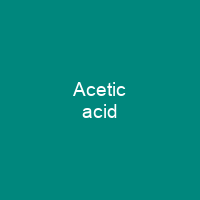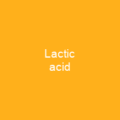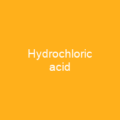Acetic acid is a colourless liquid organic compound with the chemical formula CH3COOH. It is mainly produced as a precursor to polyvinyl acetate and cellulose acetate. The name acetic Acid derives from acetum, the Latin word for vinegar.
About Acetic acid in brief

In biochemistry, the acetyl group is fundamental to all forms of life and is central to the metabolism of carbohydrates and fats. Acetate can also refer to a salt containing this anion, or an ester of acetics acid. In the food industry, acetate is controlled by the food additive code E260 as an acidity regulator and as a condiment. It can also be used as a descaling agent in the manufacture of synthetic fibres and fabrics, and in the production of wood glue and photographic film. The chemical formula is often written as CH3–COH, CH3−COH and CH3CO2H, to better reflect its structure. The trivial name is the most commonly used and preferred IUPAC name. The systematic name ethanoic acid is constructed according to the substitutive nomenclature. It comes from the ice-like crystals that form slightly below room temperature at 16. 6 °C . A common symbol for AcOH is AcOH, where Ac is the pseudoelement symbol representing theacetyl group CH3+C−; the conjugates base, acetate, is thus represented as AcO−. In the context of acid-base reactions, the abbreviation HAc is sometimes used, where Ac in this case is a symbol for acetate . Acetates is the ion resulting from loss of H+ from acetic acid.
You want to know more about Acetic acid?
This page is based on the article Acetic acid published in Wikipedia (as of Dec. 03, 2020) and was automatically summarized using artificial intelligence.







